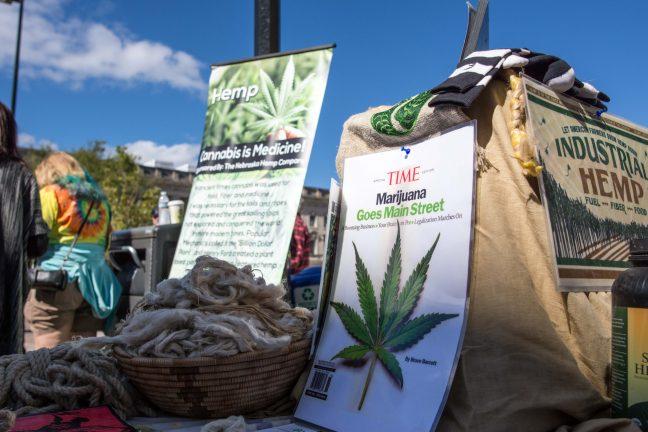A recent study by the National Institute on Drug Abuse shows college-aged students in the U.S. are using marijuana at the highest rates since the 1980s.
This spike corresponds with the lockdowns and rise in mental health problems during the pandemic, according to reporting from NBC15.
A 2019 National Institute of Health study also showed teenagers’ perception of marijuana as dangerous has dropped to the lowest point in 20 years.
The City of Madison also decriminalized marijuana possession in 2020 and despite helping prevent nonviolent drug arrests that often target people of color, the decriminalization made it easier for students to bring weed into the campus area from states where it is legal, like Illinois or Michigan.
Widespread consensus that weed is a casual drug with limited side effects paired with an increased availability of the drug nationwide could spell disaster for a generation entering the workforce.
Marijuana has taken over UW campus culture in recent years. If the drug is not regulated properly and some students continue to use it at high rates, our highly active campus culture could be affected.
The negative effects of marijuana on the brain are well-documented. The “Effects of Cannabis on the Adolescent Brain” study published in the U.S. National Library of Medicine found marijuana users aged 16-18, “demonstrated slower processing speed, poorer verbal learning and memory, and sequencing abilities.”
Another long-term study out of New Zealand makes a direct link between “persistent cannabis use” and “neuropsychological decline,” and mentions people who started smoking marijuana heavily in their teenage years and continued as adults lost about eight I.Q. points by age 38 that could not be recovered.
Most of these studies refer to people who smoke multiple times a week for years and are classified as addicted to the substance. For college students, this is a common reality.
According to the CDC, one in six people who begin smoking before age 18 will become addicted to the substance. Now, college students are smoking the most weed since the 1980s and weed is far more potent today than it was back then.
Research on the effects of weed on the brain and its addictive properties is still in its early stages and can’t be used as a definitive dismissal of the substance. But the widespread studies linking weed to neurocognition in the brain should raise strong skepticism from society.
The reasons people cite when choosing to use marijuana also reinforce these studies. Employers often find people use marijuana to deal with anxiety or ADHD, showing the substance slows down quick thinking in the brain.
What happens when a large percentage of a generation decides to intentionally limit their brain potential from an early age? The impacts of this phenomenon are yet to be realized, but an argument that this trend would not affect a group already plagued by mental health problems seems far-fetched.
Researchers recently found giving THC to rats leads them to become lazy and unmotivated. After receiving the substance, the rats were less likely to complete difficult tasks or pursue a treat.
Even if it turns out marijuana doesn’t damage the brain permanently, the substance will still change how American society works.
For example, high alcohol use at UW — where 75% of first-year students drink — makes the campus more prone to criminal activity, violence and social divisions.
Heavy marijuana use might make students be more kind to each other and have a generally positive effect on campus culture. But, it could also make them less able to socialize or join student organizations.
As we saw with isolation during the pandemic, a lack of social interaction and community makes life far more dull for everyone. This could become more noticeable in small settings like UW’s campus before reaching a national scale.
The bottom line is that we don’t know how this new marijuana trend will affect student life at UW, but it will change something about student lifestyles as is the case with every drug or stimulant.
In recent years, the younger argument marijuana is a safe and non-consequential drug has overshadowed the more traditional idea it is a dangerous one. Ignoring this perspective and the extensive scientific research that backs it as the U.S. moves towards legalization could end badly.
Will Romano (wromano@wisc.edu) is a sophomore majoring in journalism and economics and pursuing a certificate in environmental studies.


